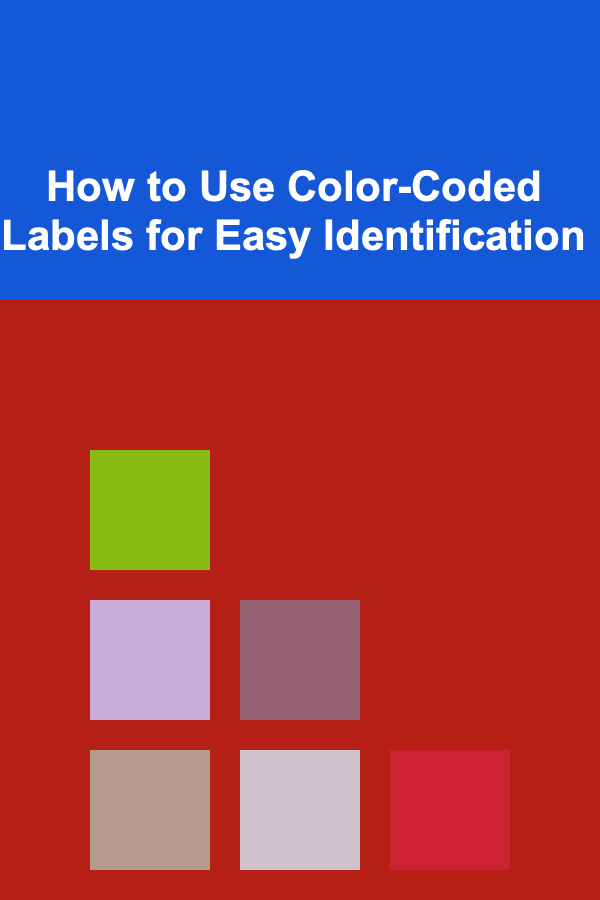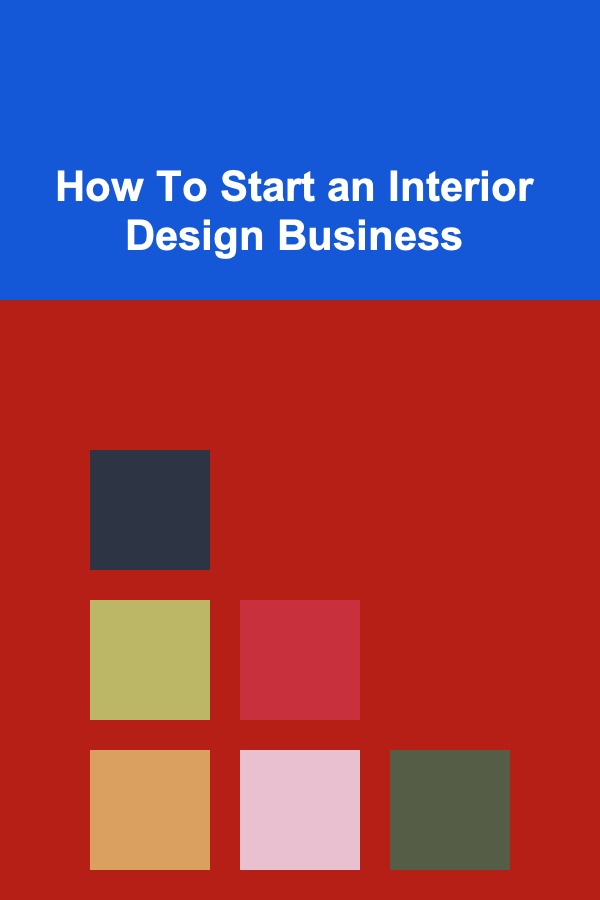
10 Tips for Choosing the Right Architectural Software
ebook include PDF & Audio bundle (Micro Guide)
$12.99$5.99
Limited Time Offer! Order within the next:
Not available at this time

In the field of architecture, the right software can significantly impact productivity, creativity, and the overall quality of work. With the rapid evolution of technology, architects now have access to a variety of tools designed to streamline workflows, enhance collaboration, and improve project outcomes. However, the sheer volume of options can make it challenging to choose the right one for your specific needs.
Whether you're an independent architect, part of a small firm, or working for a large corporation, selecting the right architectural software is a crucial decision. This software will not only help you create designs and drafts but will also influence your project management, client interactions, and even the long-term success of your architectural firm.
In this article, we'll explore 10 essential tips for selecting the right architectural software. These tips will guide you through the decision-making process and help you find the best tools for your practice, whether you're just starting out or looking to upgrade your current setup.
Define Your Project Needs and Workflow Requirements
Before you start evaluating software options, it's crucial to understand the specific needs of your architectural projects and the workflows you rely on. Not all architectural software is designed for every type of project, so identifying your priorities early on will help narrow down your choices.
Considerations:
- Project Complexity: Are you working on small residential designs or large-scale commercial projects? Complex projects may require advanced software with more robust features, such as 3D modeling and BIM (Building Information Modeling).
- Team Collaboration: If you're working in a team, you'll need software that supports collaboration and real-time updates. Look for tools that allow multiple users to work on a project simultaneously.
- Software Integration: Consider whether the software integrates well with other tools you use, such as CAD programs, rendering software, or project management tools.
- Customization: Some software allows you to customize workflows and settings to match your preferences. This can be crucial for firms with unique design processes.
By understanding your project requirements and workflow, you can ensure that the software you choose aligns with your architectural practice's goals.
Evaluate Software Compatibility and System Requirements
Before investing in any software, it's important to check its compatibility with your existing hardware and operating systems. Architectural software can be resource-intensive, especially if you're working with 3D models or rendering high-quality visuals. Ensuring that your computers meet the system requirements is essential for smooth performance.
Key Factors to Check:
- Operating System Compatibility: Some software is only available for specific operating systems, such as Windows or macOS. Make sure the software supports your platform.
- Hardware Specifications: Check if the software requires high-performance graphics cards, large amounts of RAM, or other specialized hardware components to function optimally.
- Cloud or Desktop-Based Solutions: Cloud-based tools may offer the flexibility to access your projects from anywhere, while desktop-based tools may provide more robust features. Choose based on your preferences and team structure.
Ensuring compatibility can save you from costly hardware upgrades or the frustration of a slow, inefficient workflow.
Consider BIM (Building Information Modeling) Capabilities
Building Information Modeling (BIM) has become a standard in the architectural field, offering significant advantages in terms of collaboration, project coordination, and efficiency. BIM software allows architects to create a digital model of a building, which includes not only the physical elements but also data about the materials, systems, and processes involved in construction.
Benefits of BIM:
- Visualization: BIM allows for the creation of highly detailed, 3D models that provide a better understanding of the design.
- Collaboration: Multiple team members can work on the same model, making it easier to coordinate changes and avoid conflicts during the design and construction phases.
- Cost and Time Efficiency: BIM helps detect potential issues early, reducing errors during construction and minimizing costly delays.
If BIM is crucial to your practice, look for software that integrates BIM capabilities, such as Autodesk Revit, ArchiCAD, or Vectorworks.
Assess User Interface and Ease of Use
A great piece of architectural software is only effective if it's easy to use and intuitive for your team. The user interface (UI) should be clean, organized, and easy to navigate, allowing architects to focus on design rather than troubleshooting the software.
Key Features to Look For:
- Customization Options: Can you tailor the interface to fit your workflow and preferences?
- Learning Curve: Does the software have a steep learning curve, or can new users quickly get up to speed? If you have a team, the ease of onboarding can be crucial.
- User Support: Check if the software provides robust documentation, tutorials, and customer support to assist with any issues.
The best software should feel like a natural extension of your design process, rather than a complicated tool that slows you down.
Look for Collaboration and Communication Tools
Collaboration is an essential aspect of modern architectural practice. Your software should support smooth communication between team members, clients, and contractors. This can include features like shared project files, real-time updates, and easy feedback loops.
Key Collaboration Features:
- Cloud Access: Cloud-based tools allow for real-time collaboration, where all project members can access and edit files simultaneously.
- Version Control: Look for software that keeps track of changes and allows you to revert to previous versions if needed.
- Commenting and Annotations: Being able to leave notes and feedback directly on the design file can reduce confusion and improve communication.
Collaboration features ensure that your team can work together seamlessly, regardless of location or role.
Prioritize Software Scalability
As your architectural firm grows, so will your needs. Scalability refers to how well the software can grow with your practice, accommodating more complex projects, a larger team, and an increasing number of clients.
Considerations:
- Project Size: Does the software handle large-scale projects, and can it manage the increasing complexity of those projects over time?
- Team Expansion: As your team grows, can the software accommodate more users? Look for software that allows you to scale up without requiring a complete system overhaul.
- Feature Additions: Some software offers modular features, where you can add functionality as needed. Look for software that allows you to expand its capabilities in the future.
Scalability ensures that your software will continue to meet your needs as your practice expands and evolves.
Evaluate Cost and Licensing Options
Architectural software can be expensive, and pricing structures vary widely. You need to consider your budget and the value you expect to gain from the software in terms of improved efficiency, design quality, and collaboration.
Key Pricing Factors:
- Subscription vs. One-Time Payment: Many architectural software options now operate on a subscription basis, while others offer a one-time license fee. Consider which model fits your budget and project timeline.
- Team Size: Some software is priced per user, so consider how many team members will need access.
- Free Trials: Look for software that offers a free trial or demo version so you can test it before committing to a purchase.
Make sure the software's pricing aligns with your firm's financial goals and offers a good return on investment.
Check for Industry Standards and Compatibility
Architectural software should be compatible with industry standards and work seamlessly with other tools in your workflow. This includes software for drafting, rendering, project management, and more.
Considerations:
- File Format Compatibility: Ensure the software can import and export common file formats such as DWG, DXF, and IFC.
- Third-Party Integrations: Does the software integrate well with other programs you use for rendering, project management, or client communication?
- Interoperability: If you're working on a project with other design professionals, the software should be able to collaborate with their tools.
Choosing software that works with other tools in your workflow can save you time and effort during the design and construction phases.
Focus on Rendering and Visualization Capabilities
High-quality rendering and visualization are crucial in architecture, helping you present your designs to clients and stakeholders in a clear and compelling way. The right software can help you create realistic images, animations, and walkthroughs of your designs.
Key Rendering Features:
- Real-Time Rendering: Look for software that allows you to render your designs in real-time, enabling you to see how your changes will look instantly.
- Material and Lighting Libraries: Advanced libraries for textures, materials, and lighting can help you create more realistic visualizations.
- Export Options: Ensure that the software allows you to export high-quality images, videos, and 3D models for presentations or marketing materials.
Great rendering capabilities can help your designs stand out and make a stronger impression on clients.
Stay Up-to-Date with Software Updates and Community Support
Finally, it's important to choose software that is regularly updated and has an active user community. Software updates can bring new features, bug fixes, and improvements that keep your tools relevant and competitive in the ever-evolving field of architecture.
Considerations:
- Update Frequency: Does the software receive regular updates to keep it current with technological advancements?
- Community Forums: A strong community can be a valuable resource for troubleshooting, learning new techniques, and sharing ideas.
- Customer Support: Ensure that the software provider offers responsive customer support to help with any issues that arise.
By staying updated with the latest features and engaging with the software's community, you can ensure that you're always using the best tools available.
Conclusion
Choosing the right architectural software is a critical decision that can significantly impact your workflow, creativity, and success as an architect. By carefully considering your project needs, system compatibility, collaboration features, and scalability, you can select the best tools to support your practice.
The right software will not only streamline your design process but also improve your ability to collaborate, communicate, and visualize your projects effectively. Keep these 10 tips in mind as you evaluate your options, and you'll be well on your way to selecting the perfect architectural software for your firm's needs.

How to Choose the Best Security System for an Apartment
Read More
How to Use Color-Coded Labels for Easy Identification
Read More
How To Start an Interior Design Business
Read More
How To Pick the Perfect Workplace Comedy
Read More
How to Animate Walk Cycles for Different Body Types
Read More
10 Tips for Dealing with Frizzy Hair
Read MoreOther Products

How to Choose the Best Security System for an Apartment
Read More
How to Use Color-Coded Labels for Easy Identification
Read More
How To Start an Interior Design Business
Read More
How To Pick the Perfect Workplace Comedy
Read More
How to Animate Walk Cycles for Different Body Types
Read More